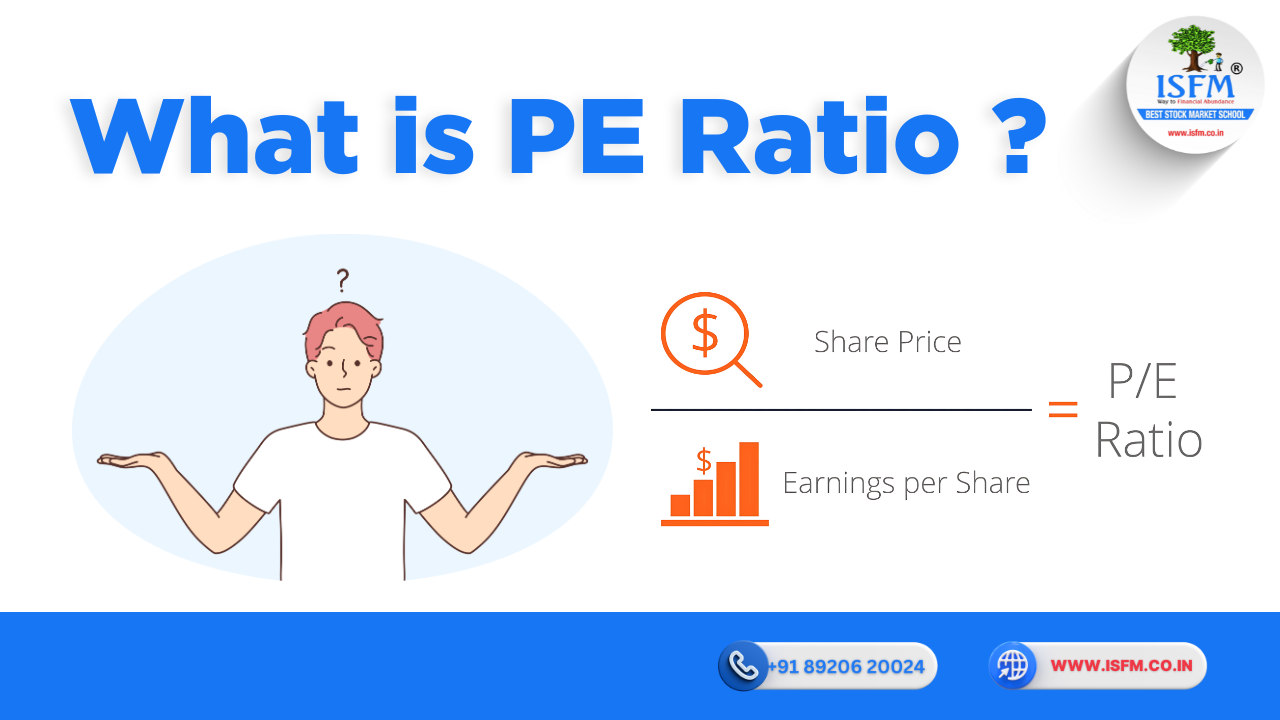Understanding P/E Ratio in the Stock Market: Meaning, Features, and Importance & How to Use It Profitably

In the world of stock market investing, one of the most commonly used financial metrics is the P/E Ratio, or Price-to-Earnings Ratio. It’s a fundamental tool used by investors, analysts, and traders to assess a company’s valuation and future potential. But what exactly is the P/E ratio, and how can market participants use it to make informed decisions and even generate profits? Let’s dive deep into this essential stock market indicator.
What is P/E Ratio?
The Price-to-Earnings (P/E) Ratio is a financial metric that compares a company’s current market price per share to its earnings per share (EPS). It helps investors evaluate whether a stock is overvalued, undervalued, or fairly priced.
P/E Ratio Formula:
P/E Ratio = Market Price per Share / Earnings per Share (EPS)
For example, if a company’s stock is trading at ₹200 and its EPS is ₹20, the P/E ratio would be 10.
Key Features of P/E Ratio
- Valuation Indicator: Reflects how much investors are willing to pay for ₹1 of earnings.
- Relative Metric: Best used when comparing companies in the same sector or industry.
- Forward vs Trailing:
- Trailing P/E: Based on past 12 months earnings.
- Forward P/E: Based on estimated future earnings.
- Market Sentiment Tool: A higher P/E often indicates high growth expectations.
- Dynamic: Changes with fluctuations in earnings or stock price.
Importance of P/E Ratio in Investing
- Helps Identify Growth Stocks: High P/E might signal strong future growth.
- Spotting Undervalued Stocks: A low P/E may indicate a bargain or a struggling company.
- Risk Assessment: Helps evaluate whether a stock’s price justifies its earnings.
- Comparison Across Peers: Useful for comparing stocks within the same industry group.
- Assists in Entry and Exit Decisions: Investors can buy undervalued stocks and exit overvalued ones.
Pros of Using P/E Ratio
- Easy to Calculate & Understand
- Quick Comparison Tool
- Effective in Mature Markets & Stable Industries
- Combines Market Sentiment with Fundamentals
Cons of Using P/E Ratio
- Can Be Misleading: Doesn’t account for debt, cash flow, or future risks.
- Not Suitable for Loss-Making Companies (EPS is negative or zero)
- Sector Dependence: P/E varies greatly across different industries.
- Ignores Growth Rate: Doesn’t factor in how fast a company is growing (for that, use PEG Ratio).
How Market Participants Can Make Money Using P/E Ratio
- Value Investing: Identify stocks with low P/E ratios relative to peers or historical averages, indicating potential undervaluation.
- Growth Investing: Invest in high P/E stocks with strong growth prospects backed by consistent earnings expansion.
- Pair Trading Strategy: Go long on undervalued stock and short on overvalued peer in the same industry.
- Buy the Dip: If P/E falls due to temporary bad news but earnings remain strong, it can be a buying opportunity.
- Avoid Overhyped Stocks: Extremely high P/E stocks may signal a bubble; knowing this can prevent poor investments.
Real-Life Example
Let’s say Company A and Company B are in the FMCG sector:
- Company A P/E = 15
- Company B P/E = 30
If both have similar growth prospects and Company A has strong fundamentals, investors may prefer it due to its lower P/E—indicating better value.
Pro Tip
Always use the P/E ratio with other metrics like PEG Ratio, Debt-to-Equity, and Return on Equity (ROE) to make a holistic investment decision.
Final Thoughts
The P/E Ratio is a powerful yet simple tool to evaluate stock prices and make smart investment choices. Whether you’re a beginner investor or a seasoned trader, understanding how to interpret and use P/E ratio can significantly improve your ability to spot opportunities in the market. However, like any tool, it works best when used in context and in combination with other financial indicators.
Learn Stock Market Investing with ISFM Gurgaon
If you’re interested in mastering such financial concepts and making intelligent investment decisions, join our Stock Market Courses at ISFM, Gurgaon’s premier stock market training institute. Learn from market experts and build a solid foundation in equity investing and trading.


